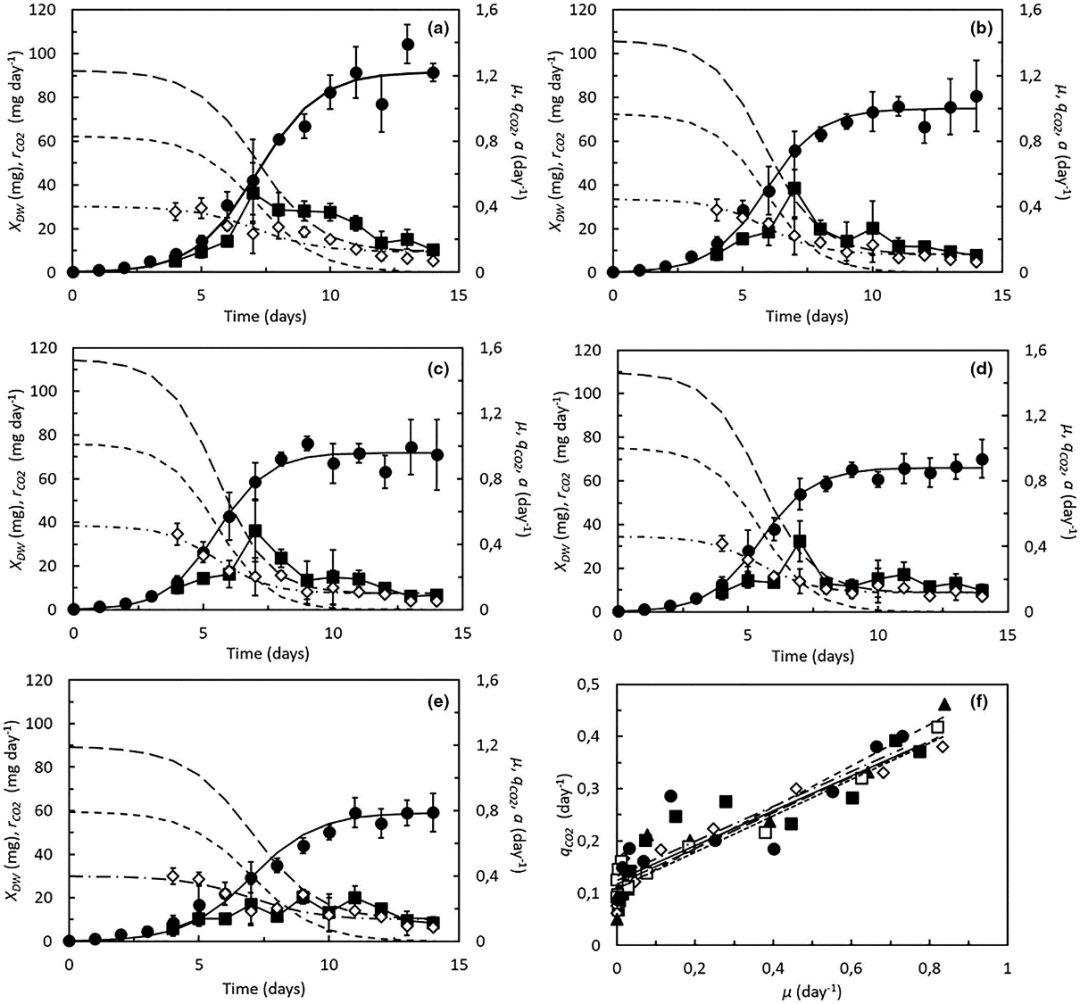Investigating the metabolic performance of black soldier larvae treating beer leesHite [31] Publish time :2024-10-31
Author:Bioforte Publisher:Yuki
I. Research background
In large-scale culture, the nutrients and sources of rearing substrates are important factors affecting the efficiency of black soldier fly (BSF) larvae culture. “The need for suitable and inexpensive rearing substrates has become an important requirement for the development of BSF larviculture. Brewer's dregs are organic wastes from the beer brewing process, mainly consisting of spent grains, pyrethrum (a special by-product of beer production) and yeast. In most parts of the world, the production of brewer's dregs is considerable, about 40 million tons/year. Beer lees contain 70% fiber, 20-30% protein, 10% lipids, vitamins and minerals, and occasionally a small amount of residual starch.Rasmus Juhl Hansen et al. (2023) investigated the metabolic performance of BSF larvae reared using mixtures of beer lees, chicken feed and two substrates.
II. Main findings
BSF larvae were able to grow on all substrates.BSF larvae reared on 100% chicken feed substrate had the highest body weight, mixed substrates had the highest Specificrate of growth (the amount of product per unit volume per unit time) and feed assimilation rate (the ratio of energy assimilated by an animal to the amount of energy ingested by the animal) and had the shortest growth cycle to reach the maximum body weight. There was no significant difference in Costs of growth (the total amount of energy consumed by the larvae during growth) between substrates, while Maintenance Rate (the proportion or rate of nutrients required by an organism to maintain its basic life activities) was slightly lower in the mixed substrates of C. nigra. Overall, despite the smaller size of BSF larvae reared on the brewers' diet, BSF larvae converted low amylose brewers' diets with approximately the same efficiency as they performed on starchy chicken diets, but the mixture of the two matrices enhanced feed assimilation rate and growth performance of BSF larvae. Thus, as far as metabolic performance was concerned, there were no significant differences between the hops and chicken feed groups.
III. Research methodology
The researchers mixed chicken feed and wine lees in the following ratios (a) 100:0 (b) 75:25 (c) 50:50 (d) 25:75 (e) 0:100 for rearing BSF. Growth and metabolic performance was evaluated and quantified by modeling with Verhulst logistic growth model, combining various growth data, and calculating larval growth cost and maintenance rate based on larval emission of CO2.
IV. Key results
01
Larvae needed to be reared for 10-11 days to reach maximum body weight on 100% chicken feed or 100% brewers' grains (Fig. 1a, e), but only 8-9 days on mixed substrates (Fig. 1b, d), which may be related to the high specific growth rate of the larvae at 5-6 d after inoculation (Fig. 2a). Larval dry weight (DW) showed a decreasing trend with the addition of brewers' grains (Fig. 2d).
02
CO2 productivity depended on larval body weight and its growth rate and peaked at day 7 (Fig. 1a-f). Feed composition had no statistically significant effect on growth costs (Fig. 2e). Maintenance rates tended to be lower for mixtures compared to pure substrates (Fig. 2f). CO2 production rates were 0.45-0.5 d-¹ for mixed substrates compared to 0.4 d-¹ for pure substrates. Mixed substrate growth rates were 0.9-1.0 d-¹ compared to 0.8 d-¹ on pure substrate.
03
The specific feed assimilation rate was estimated to be 1.4-1.5 d-¹ for the mixed substrate, compared to approximately 1.2 d-¹ on the pure substrate. In summary, both CO2 production and feed assimilation rates were slightly higher for the mixed substrate than for the pure substrate (Fig. 2g, h).
04
It was separately investigated in this paper that different proportions of mixed substrates did not affect the nutrient composition of BSF larvae. The lipid content of larvae in different experimental groups at prepupation was (a) 31.1%, (b) 29.4%, (c) 30.1%, (d) 31.8%, and (e) 29.5%, respectively.

Figure 1
Ratio of chicken feed to lees (a) 100:0 (b) 75:25 (c) 50:50.(d) 25:75.(e) 0:100. Remarks: (●): larval dry weight, XDW; (■): individual CO2 productivity; μ: specific growth rate; (◇): specific CO2 productivity;

Figure 2.
(a) Biomass converted by LN versus time. The slope of the regression line is used to estimate the specific growth rate during the initial exponential growth phase; (b) specific growth rate; (c) maximum specific growth rate; (d) maximum specific biomass dry weight; (e) growth cost; (f) maintenance factor; (g) maximum specific CO2 production rate; (h) maximum specific feed assimilation rate; (i) dry weight biomass and wet weight biomass.
V. Conclusion and outlook
Despite the low carbohydrate content of beer lees, the metabolic performance of BSF larvae in beer lees was similar to that in chicken feed, and the mixed substrate was able to further improve larval growth performance. This suggests that BSF larvae are capable of transforming beer lees and that assimilation efficiency can be further improved by optimizing substrate combinations. This study provides a scientific basis for expanding the source of BSF rearing substrate, which is conducive to promoting the development of BSF culture industry and also indicates that the BSF bioconversion model can play a more active role in the field of solid waste treatment.
References
Hansen, R. J., Nielsen, S. H. M., Johansen, M., Nielsen, F. K., Dragsbæk, F.B., Sørensen, O. S. B., & Eriksen, N. T. (2023). Metabolic performance of black soldier fly larvae during entomoremediation of brewery waste. Journal of Economic Entomology.
https://doi.org/10.1111/jen.13124
